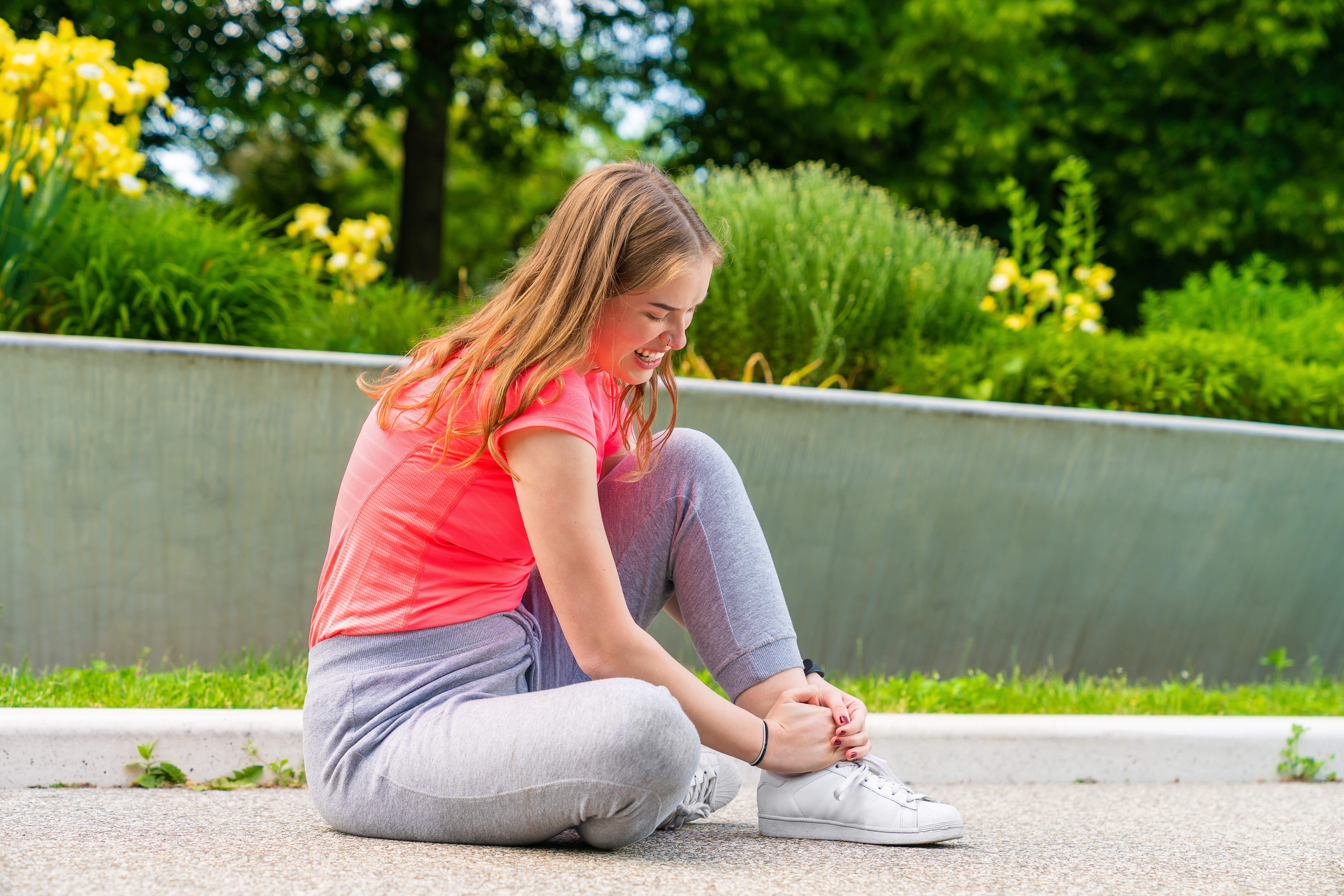Charlie Horses: Risks, Prevention, and the Right Treatment
Charlie Horses is a common name for muscle spasms, where they can feel like your muscles have tightened up and locked down from involuntary contractions.
Even lying down or sleeping can trigger back of leg cramps at night. It’s painful and can happen suddenly. Calves and quadriceps are the most commonly affected muscles by these types of intense leg cramps, although they can occur in any muscle. In addition to the feet, arms, and abdomen, they can also occur in the hands.
It’s not clear what causes a Charlie Horse, but several factors can contribute to them, including dehydration, a lack of electrolytes (including potassium and magnesium), muscle fatigue, stretching a muscle too far, cold weather, taking certain medications (such as diuretics), and some medical conditions (diabetes, kidney disease, etc.). You can also trigger a Charlie Horse by not stretching enough, exercising in high temperatures, not getting enough magnesium or potassium in your diet, and having a spinal cord injury.
One fact is for sure: The best treatment for leg cramps at night is in reach.
Your Risks, Health, and Relationship to Charlie Horses
A pain management specialist or doctor is not needed unless you have Charlie Horses with weakness, numbness, vomiting, diarrhea, or severe sweating (which can cause dehydration). Physical exams and questions about your medical history will be done by your pain management specialist or doctor.
Those with diabetes or thyroid, liver, or nerve disorders tend to suffer from Charlie Horse activity more frequently, as do older adults, athletes, pregnant women, overweight or obese people. There are also several medical and health risk factors leading to back of leg cramps at night, according to a study at the National Library of Medicine, published in 2021:
- Being diabetic.Type 1 diabetics experience muscle cramps around 60 percent of the time. About 80 percent of people with Type 2 diabetes have this condition.
- Chronic renal failure.Muscle cramps in the legs are especially common in individuals with chronic renal failure.
- Amyotrophic Lateral Sclerosis (ALS).There is a 95 percent chance that people with ALS will experience muscle cramps.
- Having a baby.Pregnant women are more likely to experience muscle cramps at night, especially if they are pregnant.
- Over 60 years old.Over 60 percent of Americans suffer from nocturnal leg cramps.
Nonetheless, there’s a smart way to treat your bad calf cramps at night.
Treatment and Prevention: The Best Paths Forward
Areas on your lower extremity that are impacted by Charlie Horses can benefit from simple stretching. Put your weight on the affected leg and bend your knee slightly if you have a Charlie Horse in your calf or back of your thigh (hamstring). Put your foot up against your head while seated or lying down.
Hold onto a chair and bend the knee of the affected leg if you have a cramp in the front of your thigh (quadriceps). Pull your foot upwards toward your buttocks. When you lie down, lift your foot, bend your ankle, and point your toes toward your shin to get relief. It loosens the tightness by causing the injured muscles to move in the opposite direction of the contracted muscles.
The muscles can also be relaxed with a massage, epsom salt bath, or heating pad. Ice packs or over-the-counter medications such as ibuprofen or naproxen may also be helpful.
Try relaxing your foot muscle when it tightens up to treat foot cramps. Additionally, ibuprofen can be taken over-the-counter to ease any remaining pain.
In most cases, muscle spasms resolve themselves on their own. Heat applied to your cramp — especially back of thigh cramps at night — can help ease the pain, as well as ice after the heat.
The best treatment for a Charlie Horse, however, is prevention. By drinking plenty of water, stretching before and after exercise, and avoiding cramps at night, you can prevent them. Wear comfortable, supportive shoes, eat magnesium, potassium, and calcium-rich foods, and adjust your exercises as needed. See what the American Academy of Orthopedic Surgeons recommends for calf stretches, hamstring stretches, and quadriceps stretches.
Additional Cures for Charlie Horses and Night Cramps
Those suffering from Charlie Horses can also benefit from vein ablation, massage therapy, acupuncture, or IV hydration.
Using vein ablation, varicose veins can be treated in a non-invasive manner. Heat, radiofrequency, or chemicals are used to close the vein after a thin catheter is inserted into it. About an hour is usually required for the procedure to be performed outpatient.
A vein can be ablated using laser or radiofrequency energy, helping cure back of leg cramps at night. Laser ablation uses a laser to heat the vein, causing it to close. Varicose veins can be effectively treated with laser ablation and radiofrequency ablation. It depends on the size and location of your varicose veins, as well as your preferences, as to what type of ablation is best for you.
The benefits of massage therapy include the increase in blood flow to the affected muscle, which helps to relax the muscle and reduce pain. Scar tissue and adhesions can also contribute to a Charlie Horse when they are not broken up by massage therapy. Stretching the affected muscle can also help relax it and reduce pain with a deep tissue massage. Firm pressure is used to break up scar tissue and adhesions. In contrast to trigger point massage, myofascial release massage uses gentle pressure to release tension in the fascia, which surrounds your muscles.
Acupuncture Therapy and IV Hydration
A Charlie Horse can also be treated with acupuncture therapy. According to some studies, acupuncture reduces the frequency and severity of a Charlie Horse in people with chronic bad calf cramps at night. It’s not fully known how acupuncture relieves the problem. Acupuncture points have been found to relax muscles and reduce pain when stimulated. Inflammation and pain may also be relieved by acupuncture therapy by improving blood flow to the affected area.
Lastly, IV hydration does not directly eliminate a Charlie Horse, but it can reduce its pain and discomfort by increasing fluid and electrolyte levels. Muscle contractions can be prevented by fluids lubricating the muscles and joints. A muscle’s function relies on electrolytes like potassium and magnesium. In dehydration or electrolyte depletion, muscles can contract.
Origin and Meaning: Describing Leg Cramps
A Charlie Horse — and the plural “Charlie Horses” — is believed to have originated in the United States in the late 1800s, although its origin is unclear. Several theories exist about the origin of the term. It’s believed that the term originated from the name of a baseball player named Charley Radbourne.
In the 1880s, Radbourne pitched for the Boston Beaneaters. During games, he was known to get daytime leg cramps, which can lead to back of leg cramps at night. Newspaper reporters used the term “Charlie Horse” to describe Radbourne’s leg cramp one day.
It may also be derived from the name of a horse that pulled groundskeepers’ carts in baseball parks. It was common for these horses to get leg cramps from being overworked and tired. In reference to the horses, these cramps became known as a “Charlie Horse.”
The term may have been derived from a horsefly that bites horses, according to another theory. As a result of their ability to cause leg cramps in horses, a horsefly of this sort is called a “Charlie Horse.”
It’s now common to refer to back of thigh cramps at night as a “Charlie Horse,” no matter what the origins of the term are. As well as in informal settings, it’s used in medical settings as well. A leg cramp can also be called a muscle cramp, a muscle spasm, a calf cramp, a shin splint, a night cramp, and a writer’s cramp.
Wellness and Pain Can Help
A range of options for treating Charlie Horses are available at Wellness and Pain. We offer conservative treatments, routine visits, and minimally invasive quick-recovery procedures. We can keep you free of problems by providing lifestyle education and home care advice to help you avoid and manage issues, quickly relieving the inhibiting lifestyle conditions when complications arise.
At Wellness and Pain, we personalize patient care plans based on each patient’s condition and unique circumstances to relieve pain, improve mobility and mental space, and improve your overall health.
Keep reading to learn more of what what you can do about leg cramps and charley horses.











